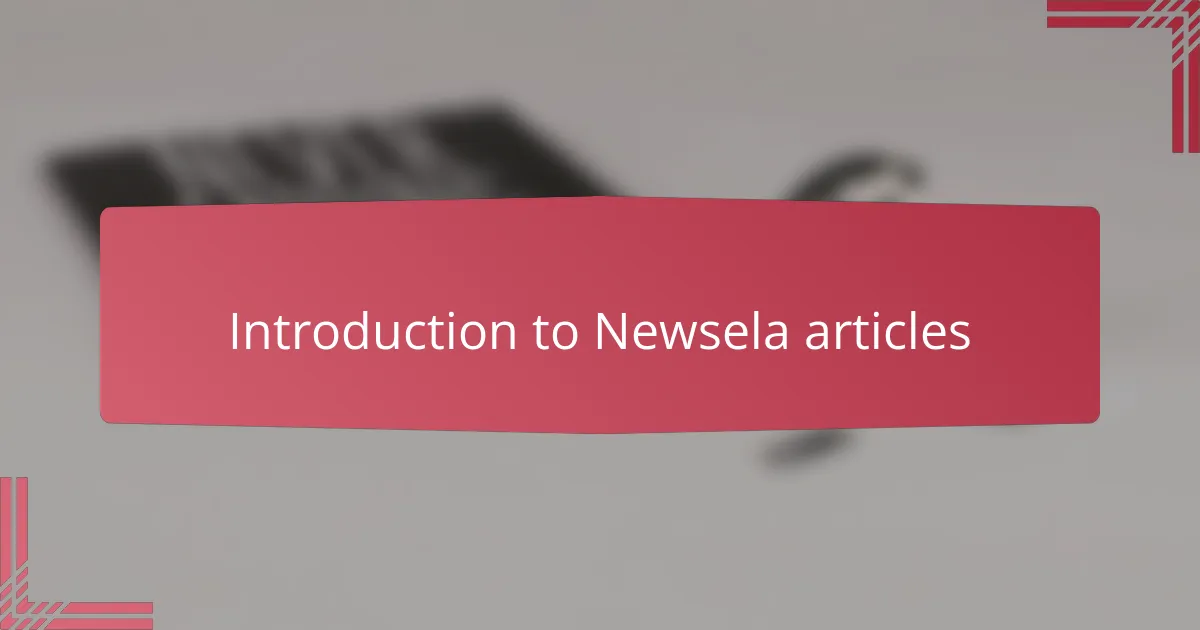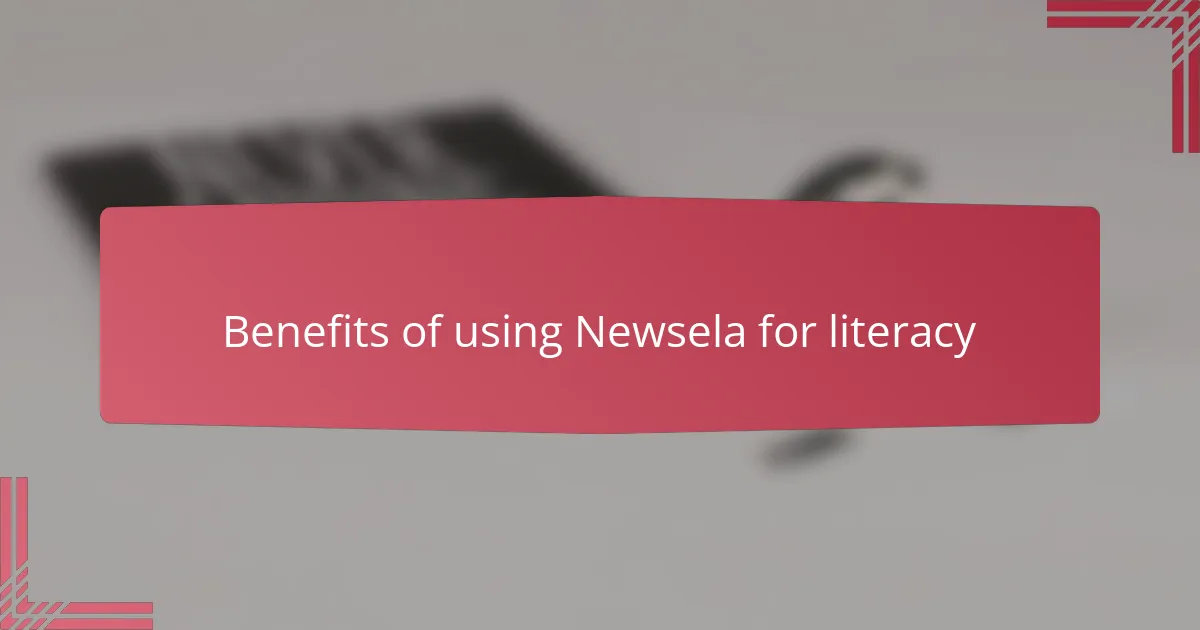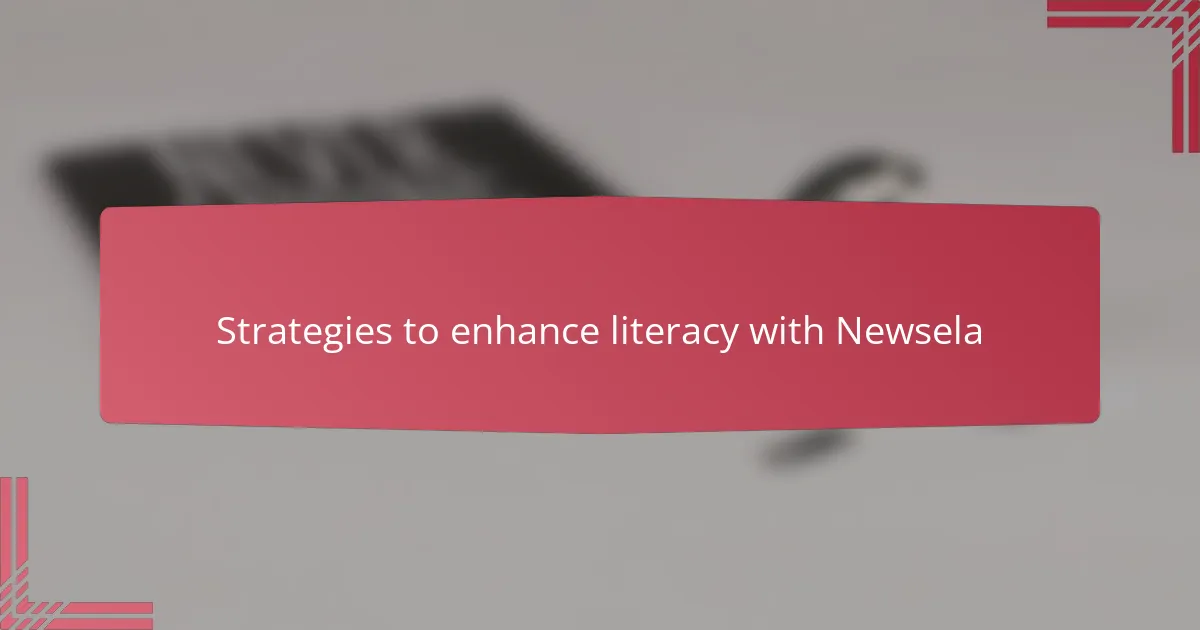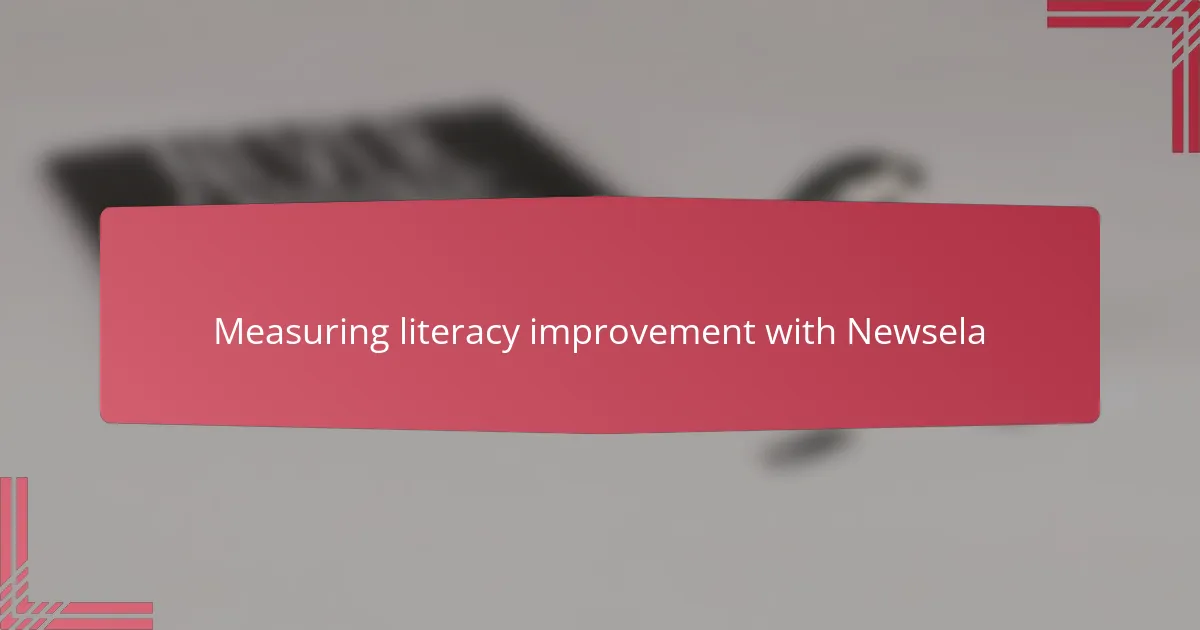Key takeaways
- Activist teacher resources empower students to engage with social justice issues, turning them into advocates for change.
- Newsela offers accessible, multi-level articles that encourage critical thinking and personal connections to real-world issues.
- Utilizing scaffolding strategies and interactive prompts enhances literacy by making reading an engaging and meaningful process.
- Measuring literacy improvement through Newsela’s assessments reveals students’ growth and confidence in handling complex texts.

Understanding activist teacher resources
Activist teacher resources are more than just lesson plans—they’re tools that challenge the status quo and inspire students to think critically about social justice. I’ve found that when I use these resources, my classroom transforms into a space where real conversations about equity and change happen naturally. Have you ever noticed how a single well-chosen article or activity can ignite a student’s passion for fairness and activism?
From my experience, these resources often provide the background and context necessary for students to connect personally with complex issues. They don’t just inform; they empower students to see themselves as agents of change. The emotional impact is something I cherish—watching students move from passive learners to engaged advocates reminds me why this work matters so much.
I sometimes wonder why all teaching materials don’t come with an activist lens. It’s clear to me that when educators embrace this approach, they nurture not only literacy skills but also empathy and critical thinking. Isn’t that exactly the kind of learning we want to foster in today’s world?

Introduction to Newsela articles
Newsela articles have become a staple in my teaching toolkit because they offer current, relevant content that resonates deeply with students. What I appreciate most is how the platform adapts complex news stories into multiple reading levels, making challenging topics accessible without diluting their impact. Have you ever noticed how students light up when they realize they’re reading the same story as their peers, yet at a level that genuinely fits their understanding?
When I first introduced Newsela articles, I was pleasantly surprised by how easily students connected with real-world issues through carefully curated texts. These articles don’t just inform—they spark curiosity and encourage students to ask tough questions about society. It’s like handing them a passport to the world beyond the classroom, inviting exploration and reflection.
One detail that stands out to me is the interactive aspect of Newsela, where quizzes and writing prompts help deepen comprehension and critical thinking. From my experience, this isn’t just about reading; it’s about fostering a dialogue between the text and the student’s own perspective. Don’t you think that’s exactly the kind of engagement we want for our learners?

Benefits of using Newsela for literacy
Using Newsela for literacy has been a game-changer in my classroom because it meets students where they are. The variety of reading levels means no one feels left behind or overwhelmed, which has boosted my students’ confidence tremendously. Have you ever seen a student who usually shies away from reading suddenly eager to dive into an article because it feels just right for them? That moment of empowerment is priceless.
Another benefit I’ve noticed is how Newsela encourages critical thinking through its built-in quizzes and prompts. These tools don’t just test comprehension—they invite students to reflect and form opinions, making reading an active, meaningful process. From my experience, that shift from passive reading to active engagement sparks richer discussions and deeper understanding.
What really strikes me is how relevant content grabs students’ attention and connects literacy to real life. When students read about current events or social issues that affect their communities, literacy becomes more than a skill—it becomes a way to make sense of the world. Isn’t that what we want as teachers—literacy that empowers, informs, and inspires change?

Strategies to enhance literacy with Newsela
One strategy I rely on is scaffolding Newsela articles by assigning different reading levels to students based on their abilities. This approach lets each learner access the same content but at a complexity that feels manageable, which builds confidence and keeps frustration at bay. Have you ever seen a student’s face light up when they realize the article isn’t too hard or too easy, but just right for them? That moment is a huge win.
I also make it a point to use the writing prompts and quizzes embedded in Newsela to deepen literacy skills. These aren’t your typical multiple-choice questions—they encourage students to think critically and express their own views. From what I’ve seen, this transforms reading into a dynamic conversation rather than a passive task, making literacy feel alive and relevant.
Another tactic I find powerful is linking Newsela articles to current classroom discussions and activist themes we explore together. By connecting the text to students’ lived experiences and issues they care about, I see increased engagement and motivation. When kids realize reading can fuel their understanding of social justice, literacy becomes much more than an assignment—it becomes a tool for change. Wouldn’t you agree that this kind of meaningful connection is what true literacy looks like?

Examples of effective classroom implementation
In one memorable lesson, I assigned a Newsela article about environmental justice at varying reading levels. Watching a typically reluctant reader share insights alongside more confident classmates made me realize how powerful differentiated text can be. Have you ever seen students surprised that they were accessing the same complex ideas, just tailored to their pace? That shared experience sparked lively discussions where every voice mattered.
I also like to use the writing prompts after articles to help students connect personally with the issues. Once, a student who rarely spoke up wrote a heartfelt response linking an article on immigration to their own family’s story. Moments like that remind me why blending literacy with social justice isn’t just academic—it’s deeply human. Doesn’t hearing those authentic voices transform the classroom energy completely?
Sometimes, I pair Newsela readings with group projects focused on current activist campaigns. This hands-on connection helps students see how literacy skills fuel real-world actions. When I see students excited to research, debate, and present ideas inspired by what they read, I know the learning has transcended the page. Have you noticed how engagement soars when reading leads directly to meaningful work?

Measuring literacy improvement with Newsela
Measuring literacy improvement with Newsela has been both straightforward and revealing in my experience. I use the platform’s built-in assessments and quizzes to track growth, and I’ve noticed how students’ scores improve as they build confidence with texts that feel approachable yet challenging. Isn’t it rewarding to see data that actually reflects a student’s increasing comfort and skill with reading?
What really stands out to me is the way Newsela’s multiple reading levels allow me to observe progress across diverse learners. For example, a student who struggled initially at a lower level began tackling more complex versions of the same article within weeks, showing real advancement. Have you ever witnessed a shift like that where the proof is right there, in the texts your students can handle?
Beyond scores, I pay close attention to how students articulate their understanding in writing prompts and discussions after Newsela readings. Observing their ability to analyze and connect ideas over time is, to me, the clearest sign of literacy development—not just in reading fluency but in critical thinking too. Isn’t that deeper comprehension what true literacy improvement looks like?